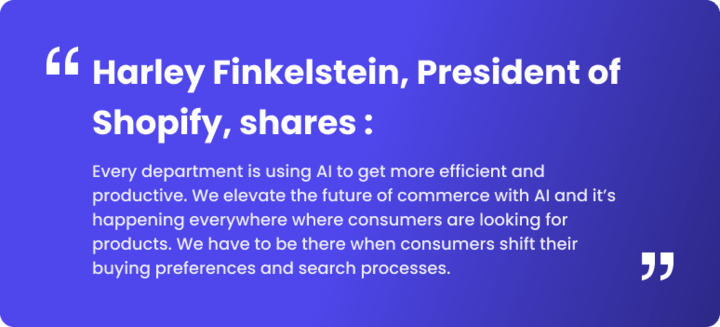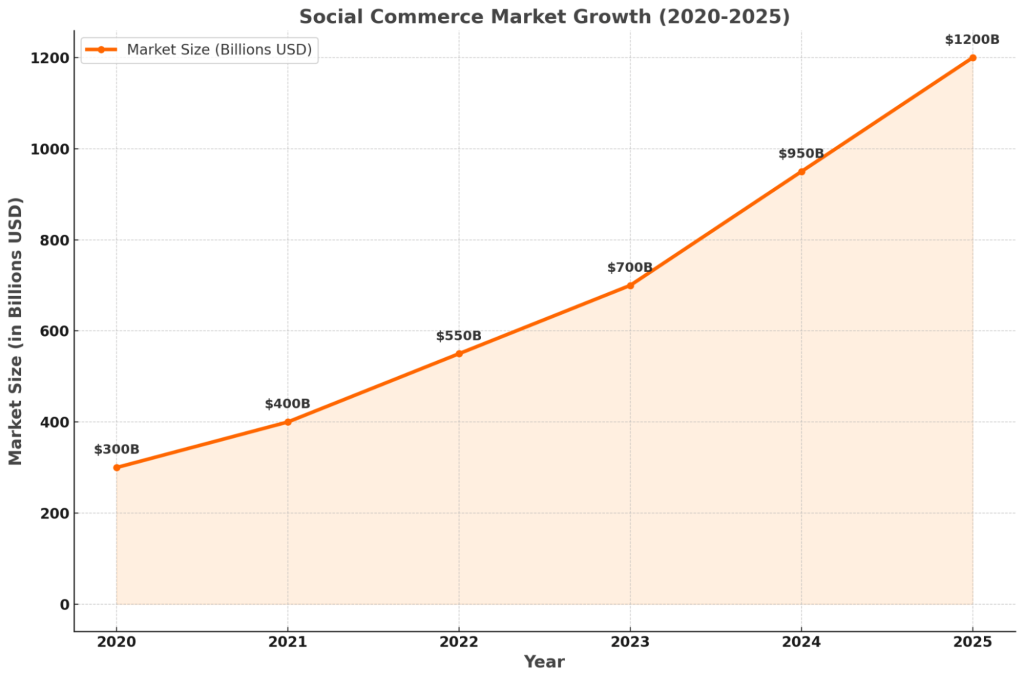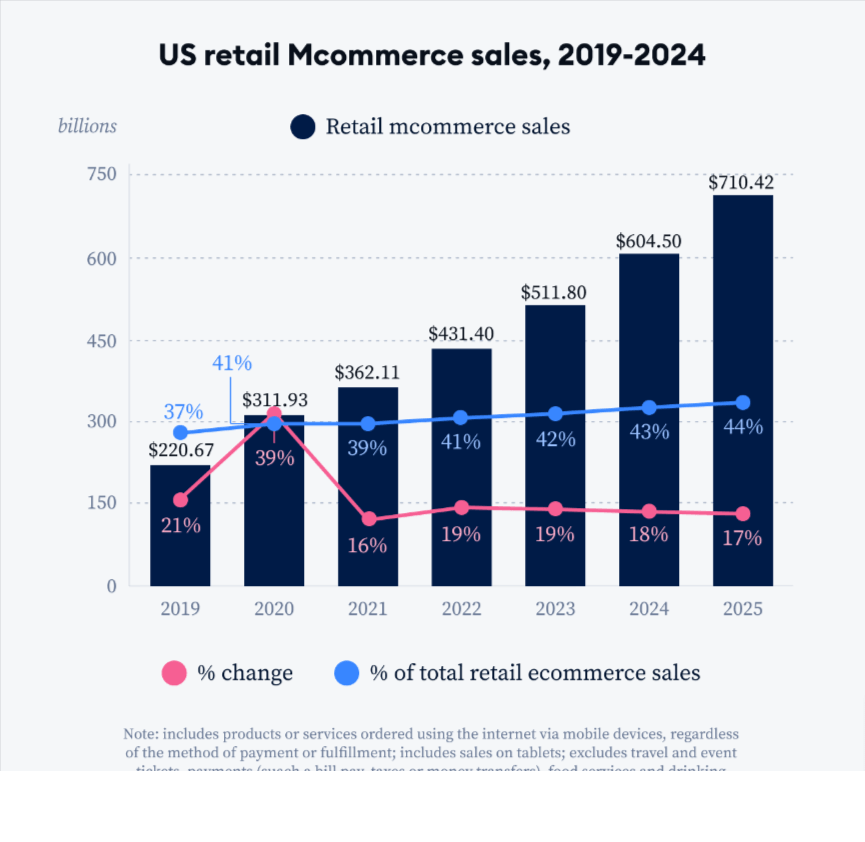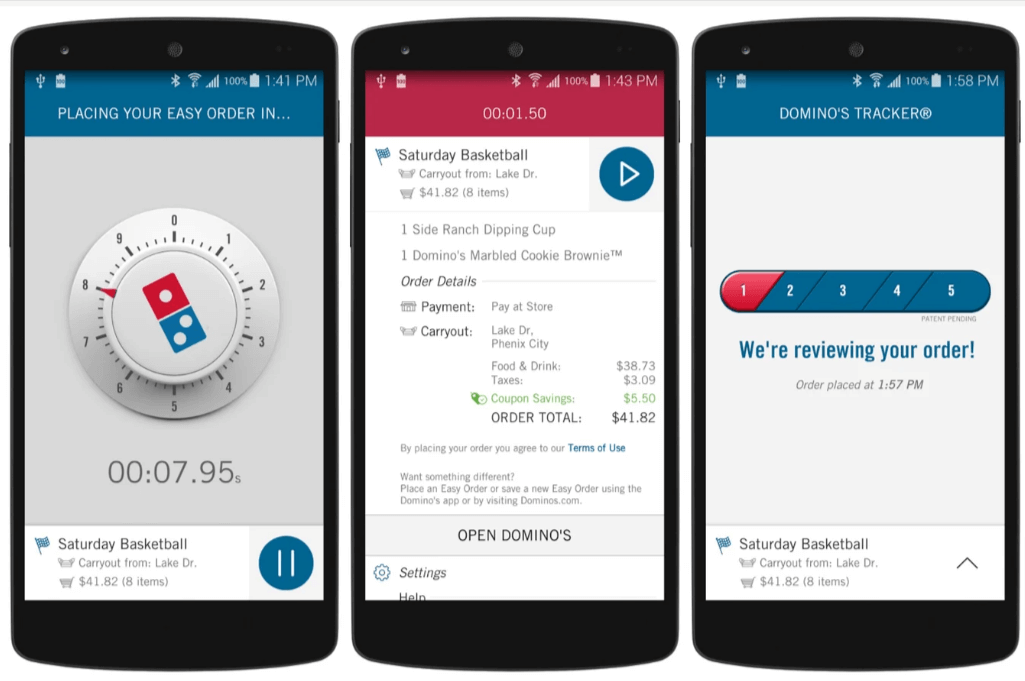As eCommerce trends continue to reshape, one thing remains constant: the industry never stands still.
Global digital sales are set to exceed $6.3 trillion in 2024, with new technologies and consumer behaviors fundamentally changing how people buy and sell online.
This blog outlines the major trends of e-commerce to watch for in the coming years. It offers practical insights backed by real market data and expert analysis.
Let us get straight into the eCommerce trends.
1. AI helps solve customer pain points
Artificial intelligence (AI) and machine learning, at this point, are practically household names in the e-commerce space.
With advancements in AI, businesses are now able to understand customer preferences with unprecedented accuracy. SEO Horizon states that 95% of customer interactions will be AI-driven to improve personalization.

Today, major eCommerce owners are using AI across multiple touchpoints:
- Personalized Shopping Experiences:
- Your store can learn from each customer interaction
- Product recommendations become increasingly accurate
- Individual pricing and promotion strategies
- Customized homepage layouts for each visitor
- Customer Service Evolution:
- 24/7 AI chatbots handle routine inquiries
- Smart routing of complex issues to human agents
- Automated order tracking and updates
- Predictive problem-solving before issues arise
Example: Zivame’s tie-up with Boxx.ai.
Zivame has now tied-up with a Bangalore-based AI company, Boxx.ai, to further propel its efforts in the space of customer-oriented, personalized communication, powered by AI and machine learning technologies.
Looking forward, e-commerce businesses are implementing:
- Advanced AI Integration:
- Natural language processing for more human-like interactions
- Emotional intelligence in customer service responses
- Predictive inventory management
- Real-time pricing optimization
- Data-Driven Decision Making:
- Deep customer behavior analysis
- Trend prediction and inventory forecasting
- Automated marketing campaign optimization
- Personalized email and notification timing
2. Voice Commerce Becomes Mainstream
The intersection of smart technology and shopping behavior is creating unprecedented opportunities for frictionless commerce. As voice-enabled devices become increasingly sophisticated, they’re transforming from simple digital assistants into powerful shopping companions, fundamentally altering how consumers interact with online stores.
Statista predicts that 75% of US households are projected to own a smart speaker by 2025. This isn’t merely about adoption rates – it’s about a fundamental shift in consumer behavior and expectations.
Today, major retailers are leveraging voice technology in innovative ways:
- Smart Shopping Integration:
- Your customers can place orders through voice commands
- Shopping lists update in real-time across devices
- Reordering becomes as simple as speaking
- Price comparisons happen through natural conversation
- Voice Search Optimization:
- Product catalogs adapt to conversational queries
- Natural language processing enhances search accuracy
- Voice-activated product recommendations
- Hands-free order tracking and updates
Example: Walmart’s Voice Ordering with Google Assistant
Walmart has partnered with Google Assistant to enable voice-activated shopping. Customers can simply say, “Add milk to my Walmart cart,” and the item is instantly added, simplifying the shopping process.

Forward-thinking e-commerce businesses are implementing:
- Voice-First Features:
- Conversational commerce interfaces
- Voice-activated shopping carts
- Natural language order processing
- Multi-device shopping synchronization
- Voice Search Enhancement:
- Long-tail keyword optimization
- Question-based product descriptions
- Voice-friendly content structure
- Contextual search responses
3. AR delivers showroom experiences at home
The traditional barriers between online browsing and in-store experiences are dissolving. As consumers demand more confidence in their digital purchases, augmented reality bridges the gap between digital browsing and physical shopping experiences.
Sciencedirect predicts that the AR market is expected to reach US $85 billion by 2025, of which US$11.4 billion will belong to the retailing sector.
Today, major retailers are using AR in different ways:
- Virtual Try-Ons:
- Your customers can visualize products on themselves before purchasing
- Real-time size and fit recommendations reduce return rates
- Interactive 3D models provide complete product visualization
- Color and style variations can be tested instantly
- Home Visualization:
- Furniture and décor items can be placed in customers’ actual spaces
- Accurate size and scale representation
- Real-time lighting and shadow effects
- Multi-item room planning capabilities
Example: IKEA’s AR App
IKEA Place, allows customers to see how furniture looks and fits in their rooms with incredible accuracy.

In response, forward-thinking e-commerce businesses are implementing:
- Advanced AR Features:
- Mobile-first AR experiences work directly in browsers
- One-click AR view options on product pages
- Social media AR integration for wider reach
- Virtual showrooms for premium shopping experiences
- Interactive Visualization Tools:
- 360-degree product views
- Customizable product configurations
- Measurement tools for precise sizing
- AR-powered size guides
4. Social Commerce brings the storefront to social feeds
Social commerce — the integration of shopping with social media — is booming. Platforms like Instagram, Facebook, and TikTok now offer seamless in-app purchasing options, allowing consumers to shop directly from their feeds.
eMarketer study showed that social commerce sales are projected to reach $100 billion by the end of 2025, making up a significant portion of total e-commerce revenue.
In 2023, 50% of Gen Z and millennials said they made a purchase directly through social media. As brands tap into this trend, another study from Accenture states that social commerce is expected to become a $1.2 trillion market by 2025.

Example: Instagram Shopping
- You can now transform your entire Instagram feed into a virtual storefront
- Your customers can make purchases directly from posts, stories, and reels
- You’re missing out on significant revenue potential if you’re not utilizing Instagram’s shopping tags
In response, businesses are optimizing their social media presence through:
- Shoppable Video Content:
- You can create immersive videos showing products in action
- Your customers can complete purchases without leaving the video
- Engagement rates significantly outperform traditional advertising methods
- Interactive Shopping Features:
- Live polls during shopping events boost engagement
- Real-time Q&A sessions build trust and convert browsers to buyers
- Direct messaging provides immediate customer support.
5. Mobile commerce dominates the digital marketplace
Traditional desktop shopping is evolving rapidly as smartphones become the primary gateway to online retail. Mobile e-commerce (m-commerce) has grown exponentially over the past decade.
According to Insider Intelligence, mobile commerce sales are projected to hit $710 billion by 2025.

Today, major retailers are leveraging mobile-first strategies:
- Progressive Web Apps (PWA):
- Your mobile site performs with app-like speed
- Offline functionality maintains shopping experience
- Push notifications drive engagement
- One-click checkout reduces friction
- Mobile Payment Integration:
- Digital wallets streamline transactions
- Biometric authentication enhances security
- Buy now, pay later options at fingertips
- Cross-platform payment synchronization
Example – Domino’s m-commerce
Domino’s Pizza has mastered m-commerce with its mobile app that allows users to customize orders, track delivery in real time, and reorder favorites with a single tap.

To capitalize on these opportunities, businesses are focusing on:
- Advanced Mobile Features:
- Instant loading product pages
- Native-app-like experiences
- Gesture-based navigation
- Mobile-optimized images and videos
- Conversion Optimization:
- Simplified mobile checkout flows
- Smart form auto-completion
- Mobile-friendly product filters
- One-handed navigation design
6. New Payment Options Simplify Commerce
Consumers today expect a variety of payment methods at checkout. So, the traditional credit card checkout is rapidly evolving.
According to Worldpay’s Global Payments Report, digital wallets will account for more than $25 trillion in global transaction value by 2027.
Industry leaders are pioneering innovative approaches:
- Buy Now, Pay Later (BNPL):
- Your customers split purchases into manageable installments
- Zero-interest payment plans increase cart values
- Real-time approval processes reduce abandonment
- Integration with major BNPL providers like Klarna and Affirm
- Digital Wallet Integration:
- One-click payments reduce checkout friction
- Multi-currency support enables global commerce
- Biometric authentication enhances security
- Cross-platform payment synchronization
Example – Shopify’s Diverse Payment Options
Shopify merchants have integrations with over 100 other payment providers including options like BNPL, PayPal, and digital wallets, leading to higher conversions and smoother checkout experiences.

Smart businesses are responding to this trend by deploying:
- Advanced Payment Solutions:
- Cryptocurrency payment acceptance
- QR code payment options
- Mobile wallet integration
- Subscription billing capabilities
- Payment Experience Enhancement:
- Simplified checkout flows
- Stored payment preferences
- Smart payment routing
- Automated retry logic for failed payments
7. Sustainability Gains Importance in Purchasing Decisions
Eco-conscious consumers are prioritizing sustainability in their purchasing decisions, pushing brands to adopt greener practices. From biodegradable packaging to carbon-neutral shipping, e-commerce businesses are going green to meet customer demands.
Bain & Company’s survey found that 64% of consumers are willing to pay more for sustainable products.
Industry leaders are pioneering sustainable approaches:
- Eco-Friendly Operations:
- Your supply chain optimizes for carbon reduction
- Packaging transitions to recyclable materials
- Local sourcing reduces transportation impact
- Waste reduction becomes measurable and transparent
- Consumer Transparency:
- Carbon footprint displayed on products
- Ethical sourcing information readily available
- Sustainability scores guide purchasing
- Environmental impact tracking at checkout
Example – Patagonia’s Commitment to Sustainability
Patagonia has long been a leader in sustainability, pledging to donate 1% of eCommerce sales to environmental causes and using only recycled or organic materials in its products.

To capitalize on this shift, businesses are implementing:
- Sustainable Practices:
- Circular economy initiatives
- Recycling and return programs
- Energy-efficient logistics
- Plastic-free packaging solutions
- Green Innovation:
- Carbon offset integration
- Sustainable product alternatives
- Digital receipts by default
- Eco-friendly shipping options
Looking Ahead: The Future of E-commerce
These trends point to one clear reality: e-commerce is continuously redefining itself. The key to thriving in 2025 and beyond lies in balancing three core elements:
- Customer experience: Understanding and adapting to changing consumer expectations
- Technology integration: Implementing solutions that genuinely improve your operations
- Business fundamentals: Maintaining profitability while investing in growth
The future of e-commerce belongs to businesses that can stay agile while keeping their customers’ needs at the center of every decision.
Frequently Asked Questions
The next big thing in eCommerce is AI-powered personalization and voice commerce. Major retailers are investing heavily in AI tools that predict shopping behavior and provide hyper-personalized experiences.
The future of eCommerce in 2025 is centered around omnichannel integration, social commerce, and augmented reality shopping. Brands are merging online and offline experiences, turning social media platforms into direct sales channels, and implementing AR for virtual try-ons and product visualization.
Amazon remains the number 1 eCommerce platform globally, with approximately 40% market share in the US and over 300 million active customers worldwide. However, regional leaders like Alibaba in Asia and MercadoLibre in Latin America dominate their respective markets.
The future of e-commerce in 2025 will be driven by Web3 technologies, sustainable commerce, and advanced payment solutions. This includes blockchain-based transactions, eco-friendly delivery options, and seamless payment methods like cryptocurrency and buy-now-pay-later services becoming mainstream.
Southeast Asia is currently the fastest growing eCommerce market, with Indonesia leading the charge. The region’s digital economy is expected to reach $350 billion by 2025, driven by a young population, increasing internet penetration, and rapid mobile commerce adoption.
